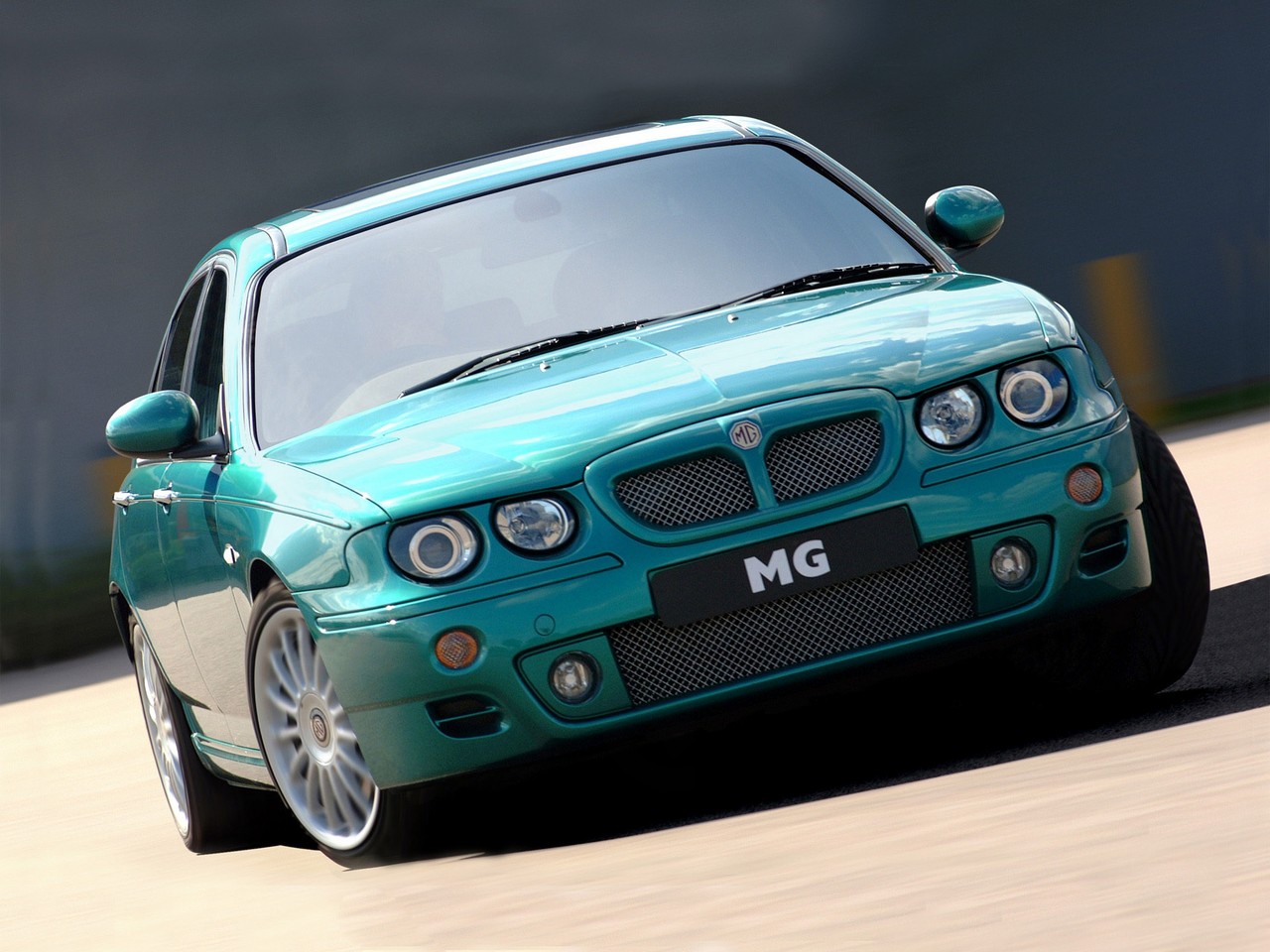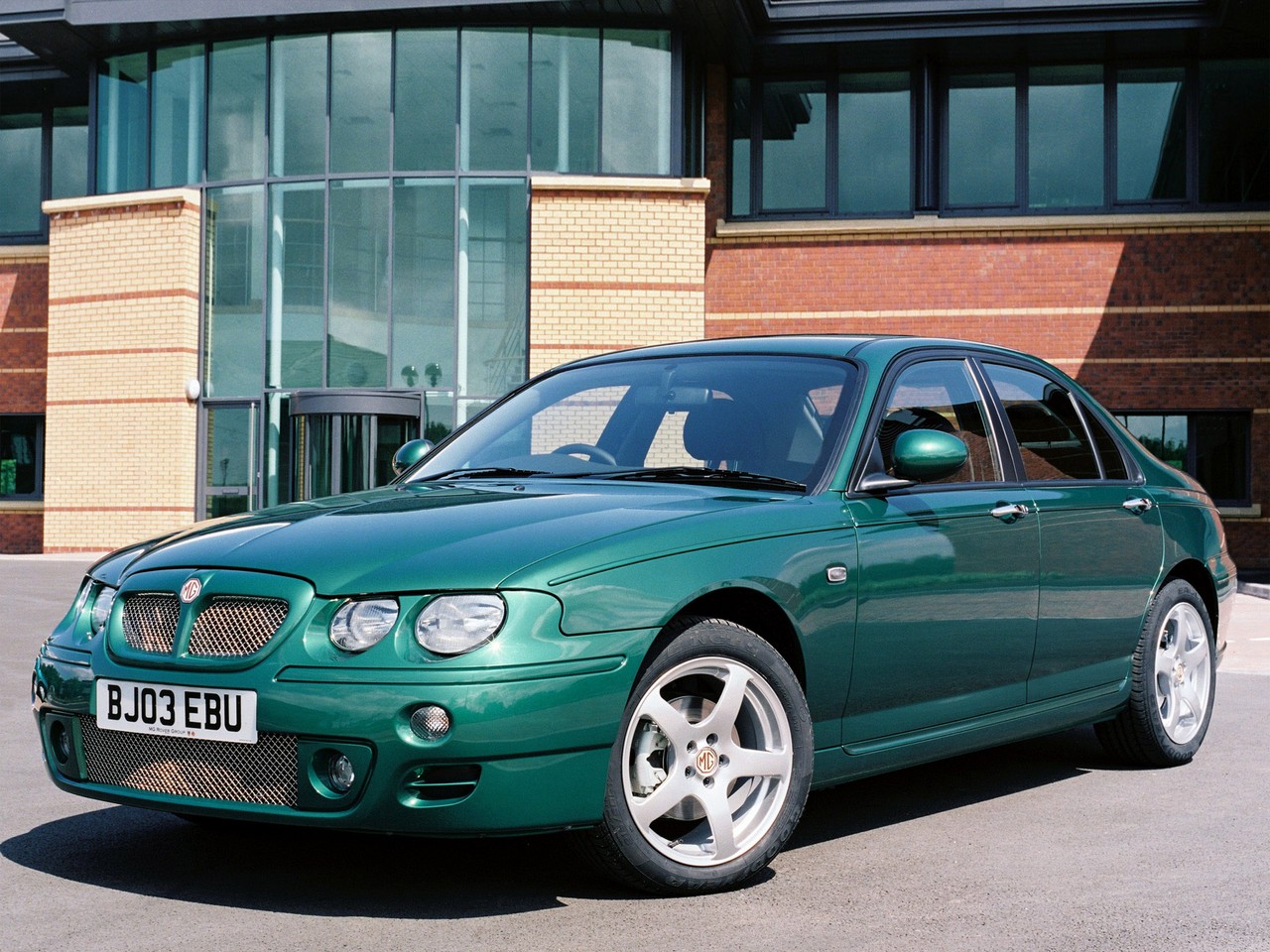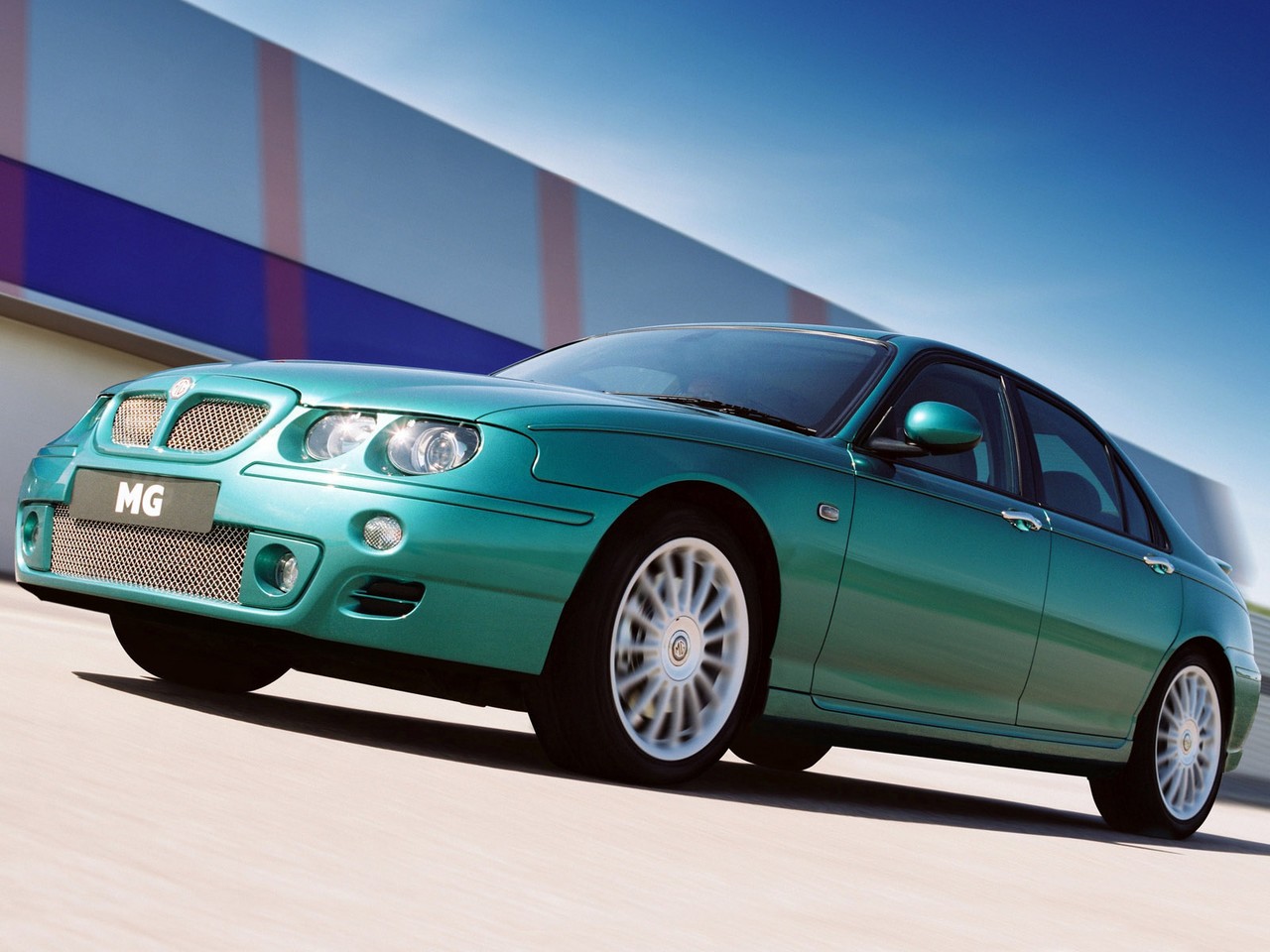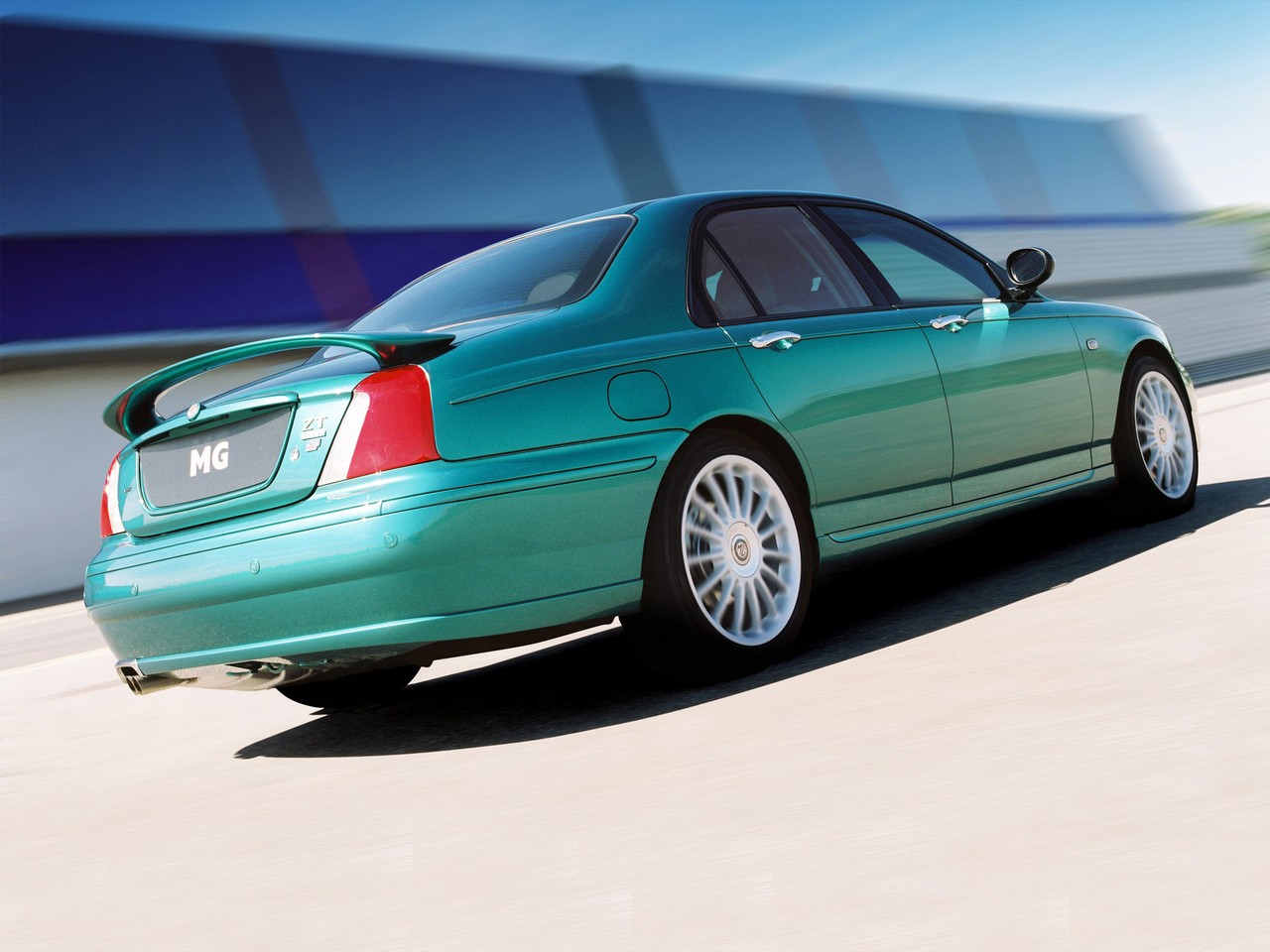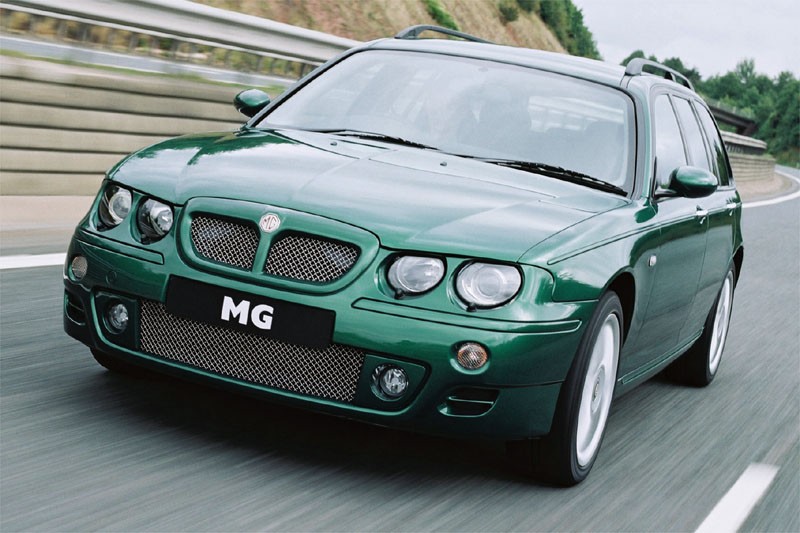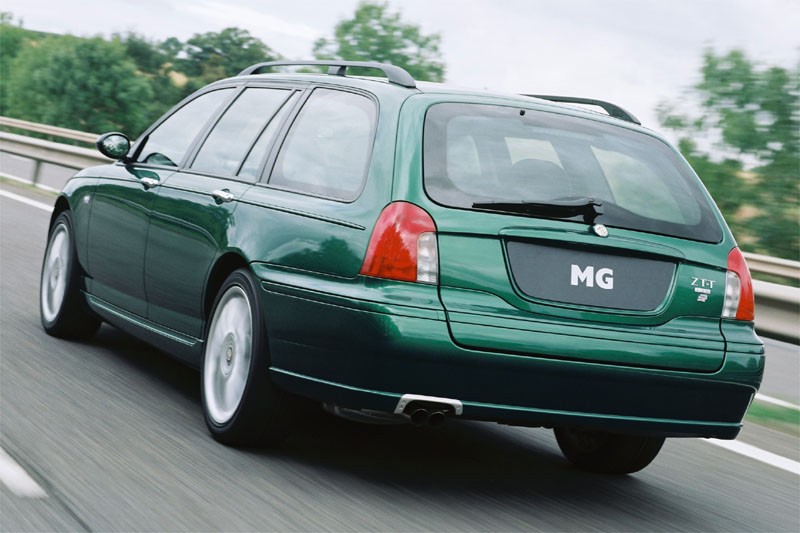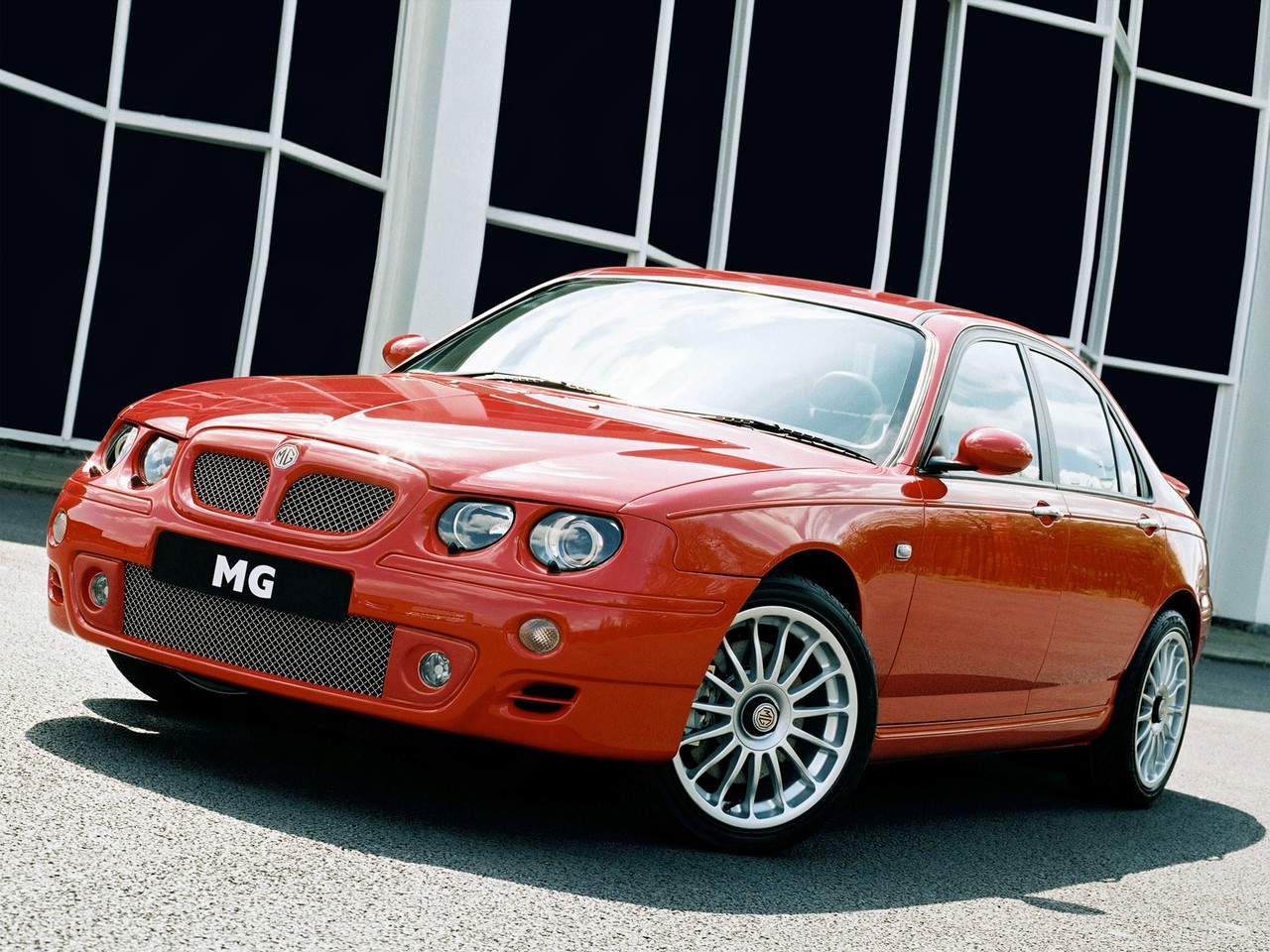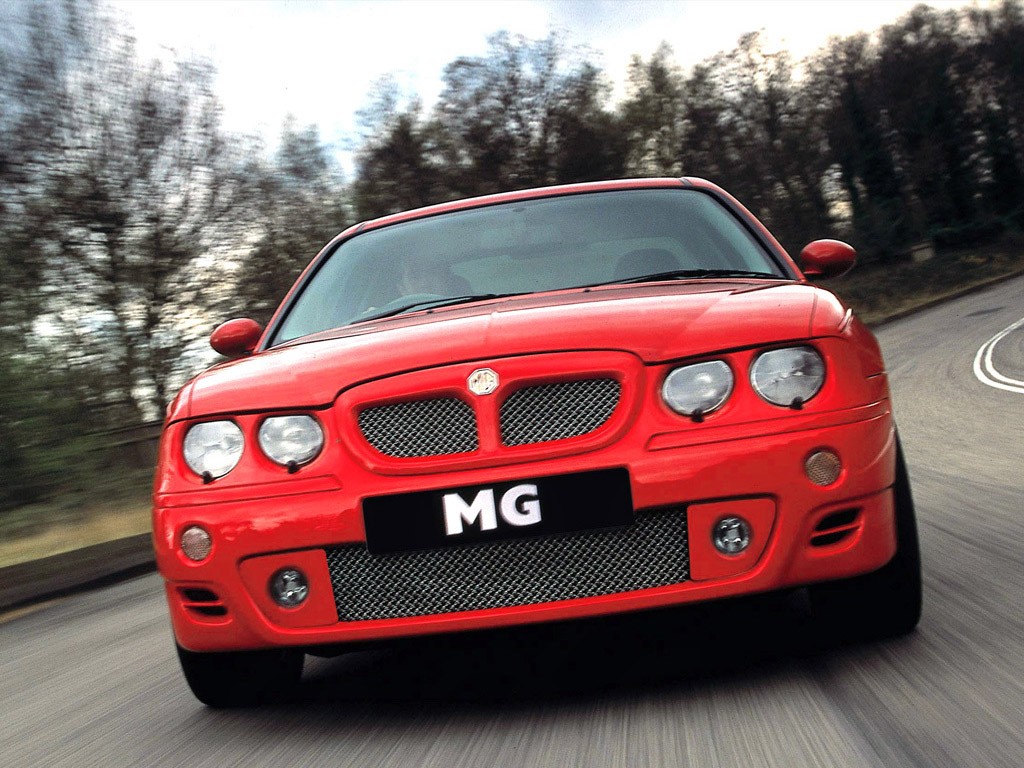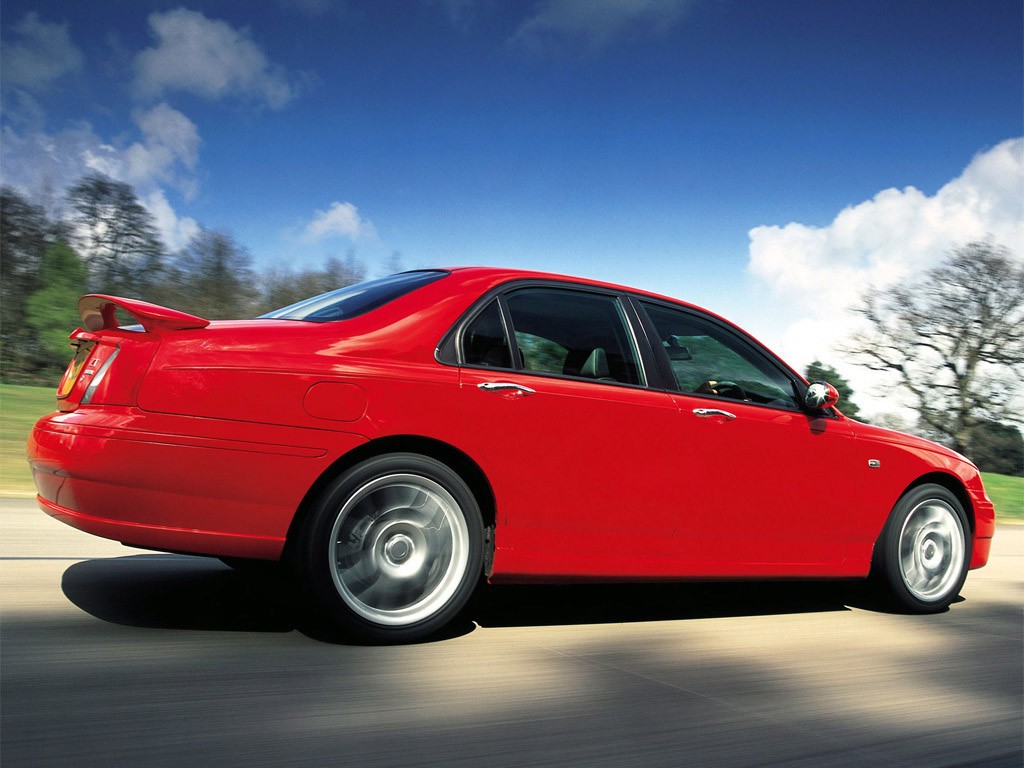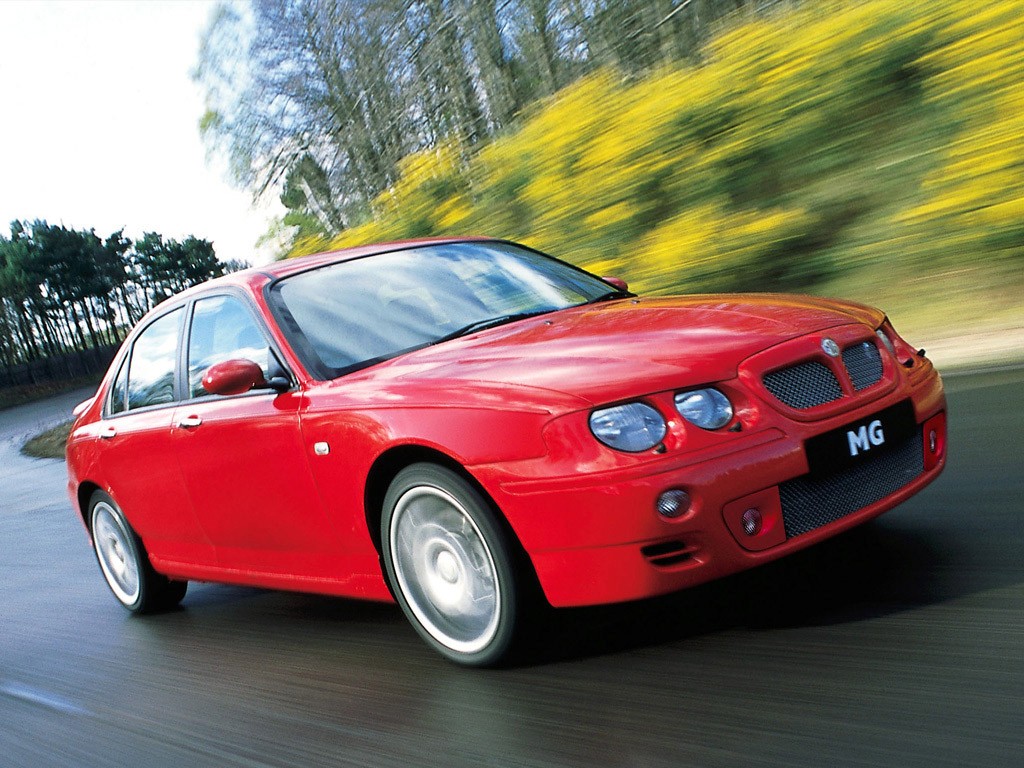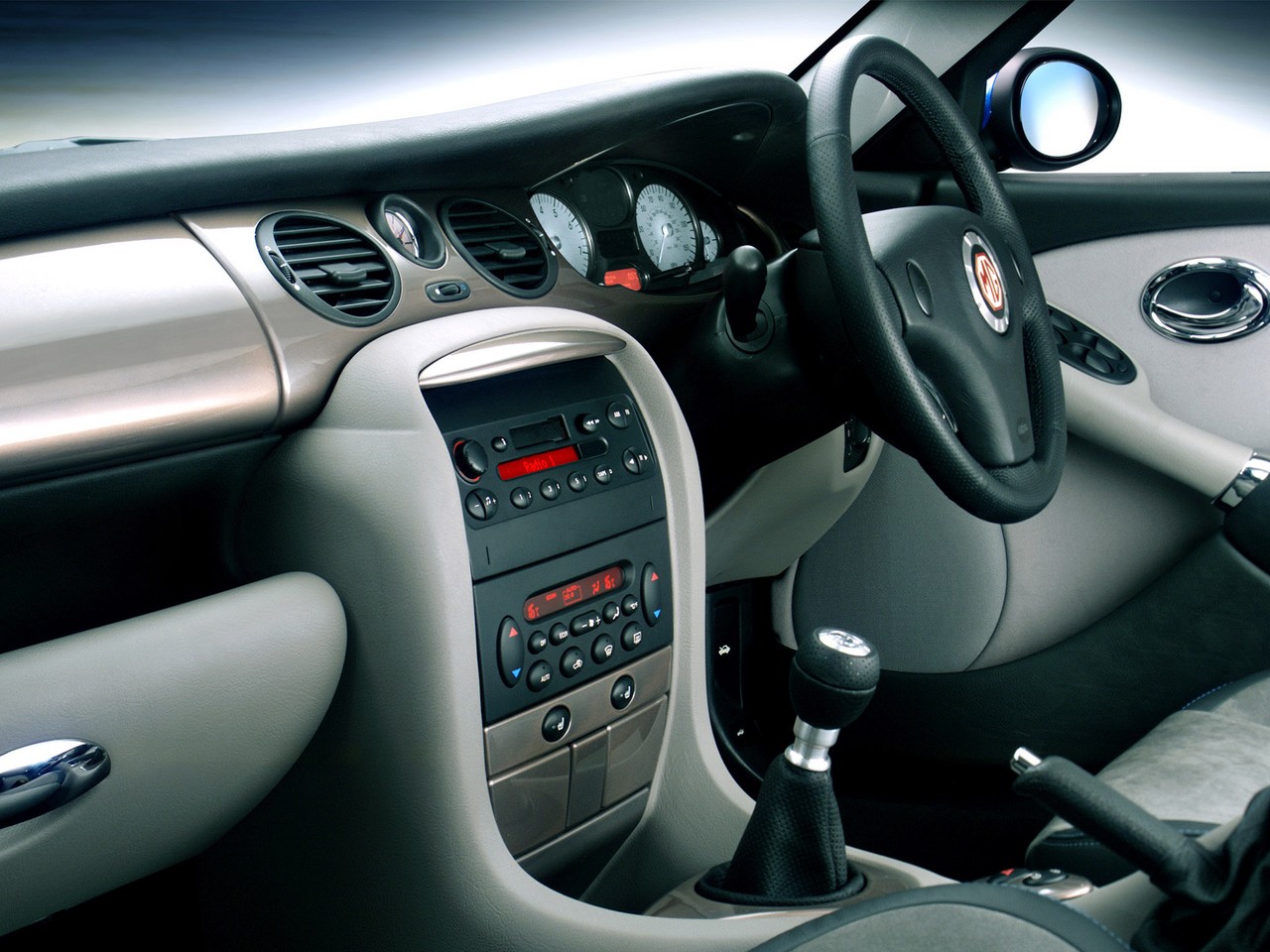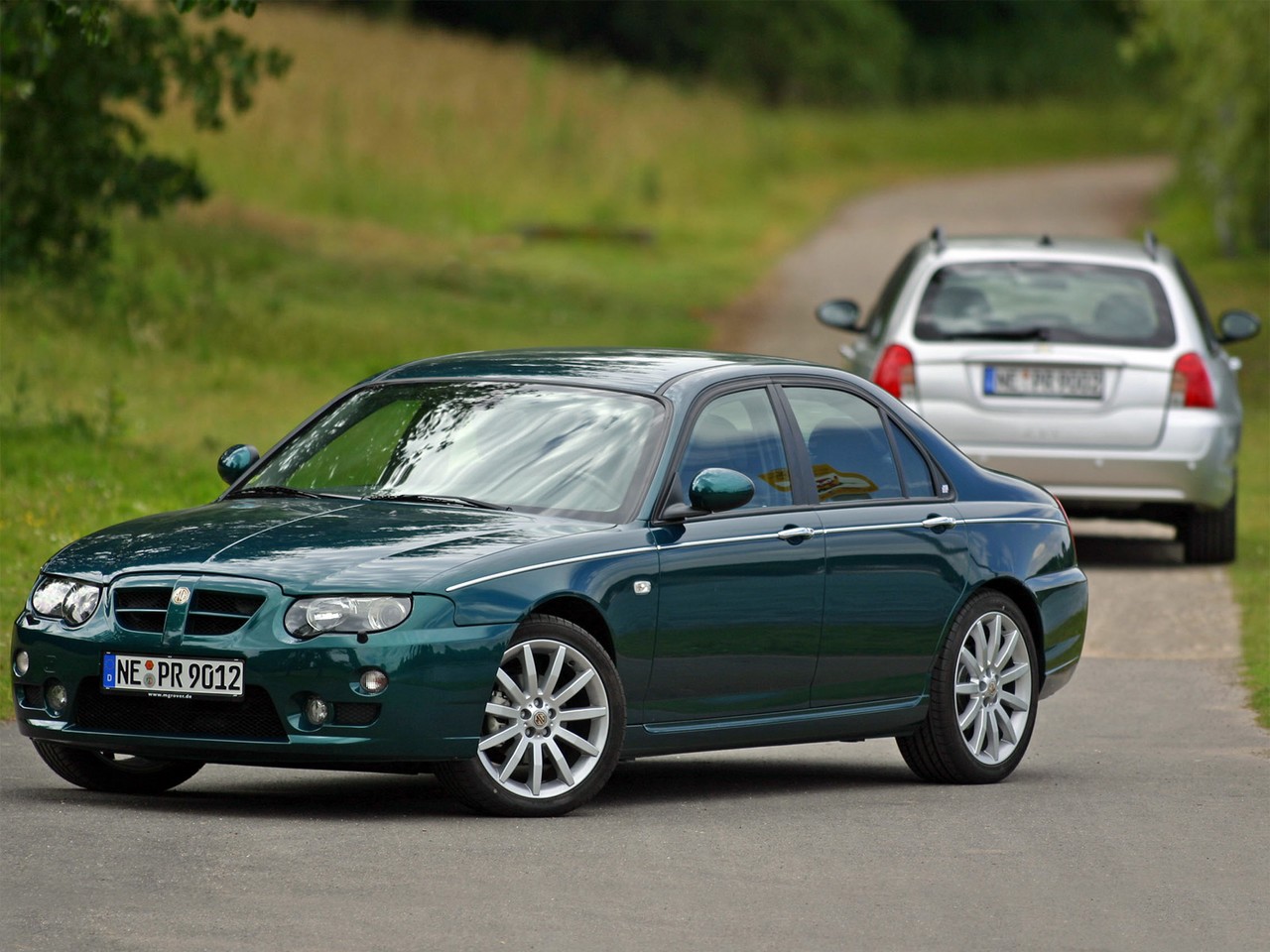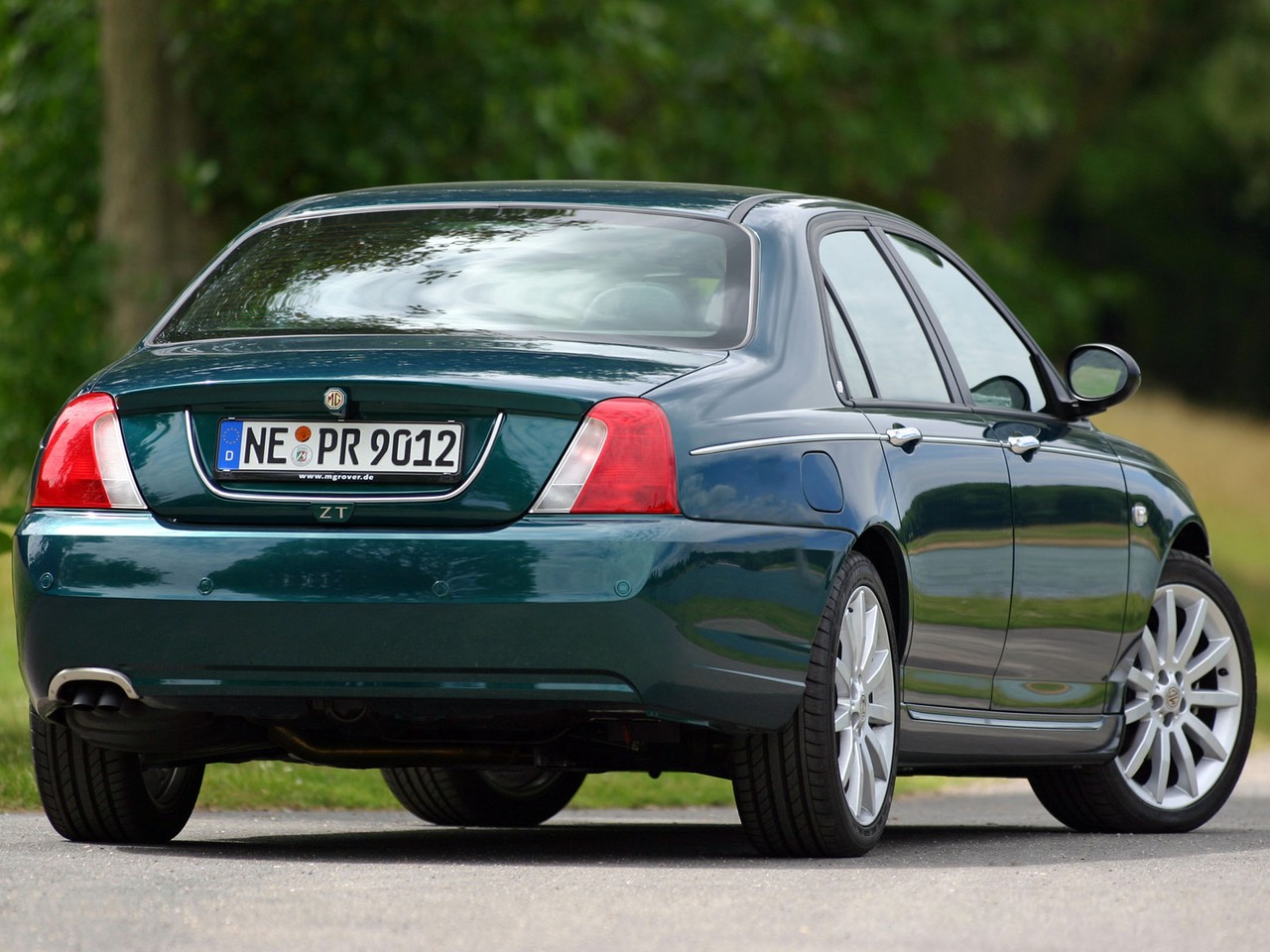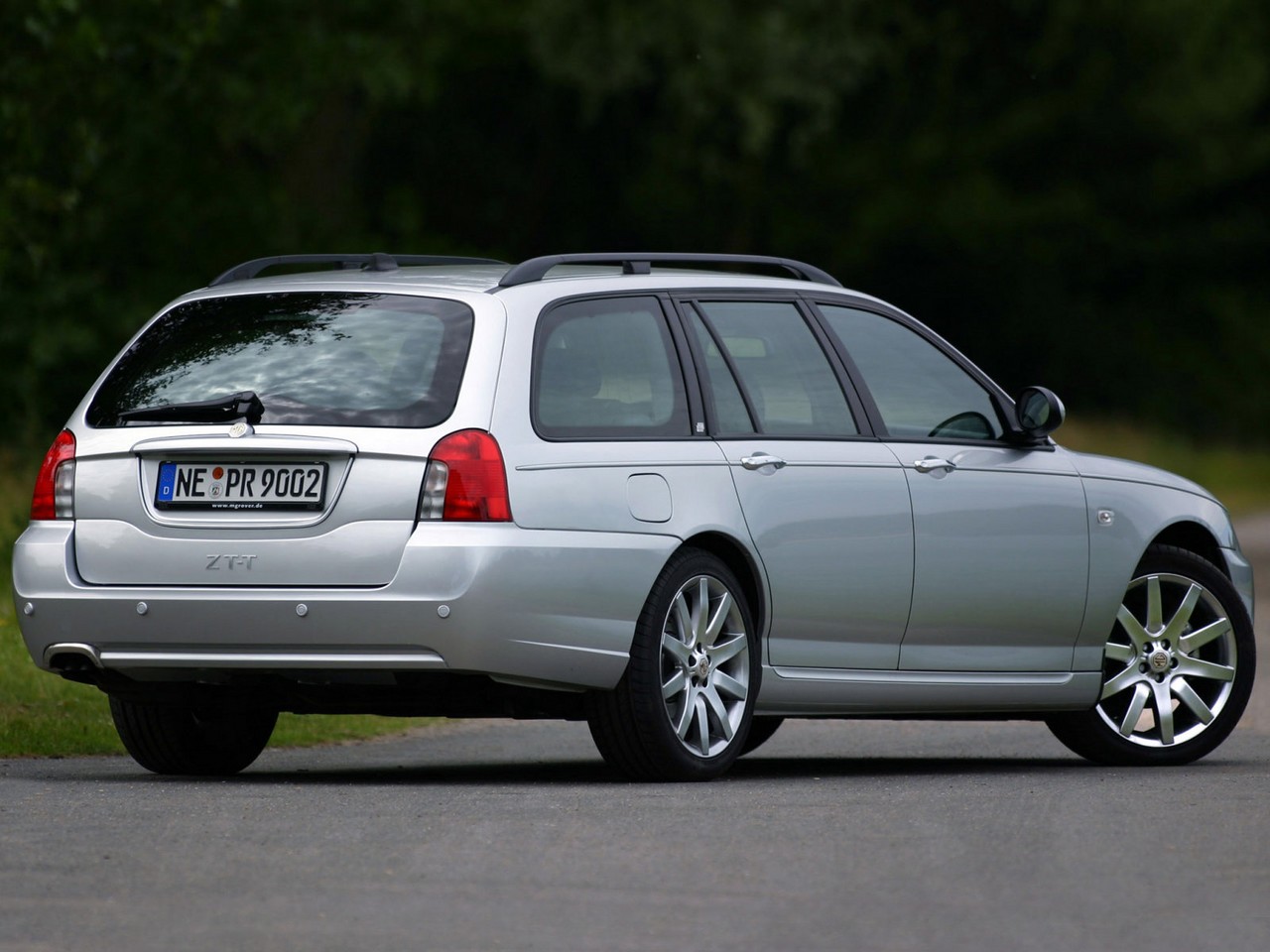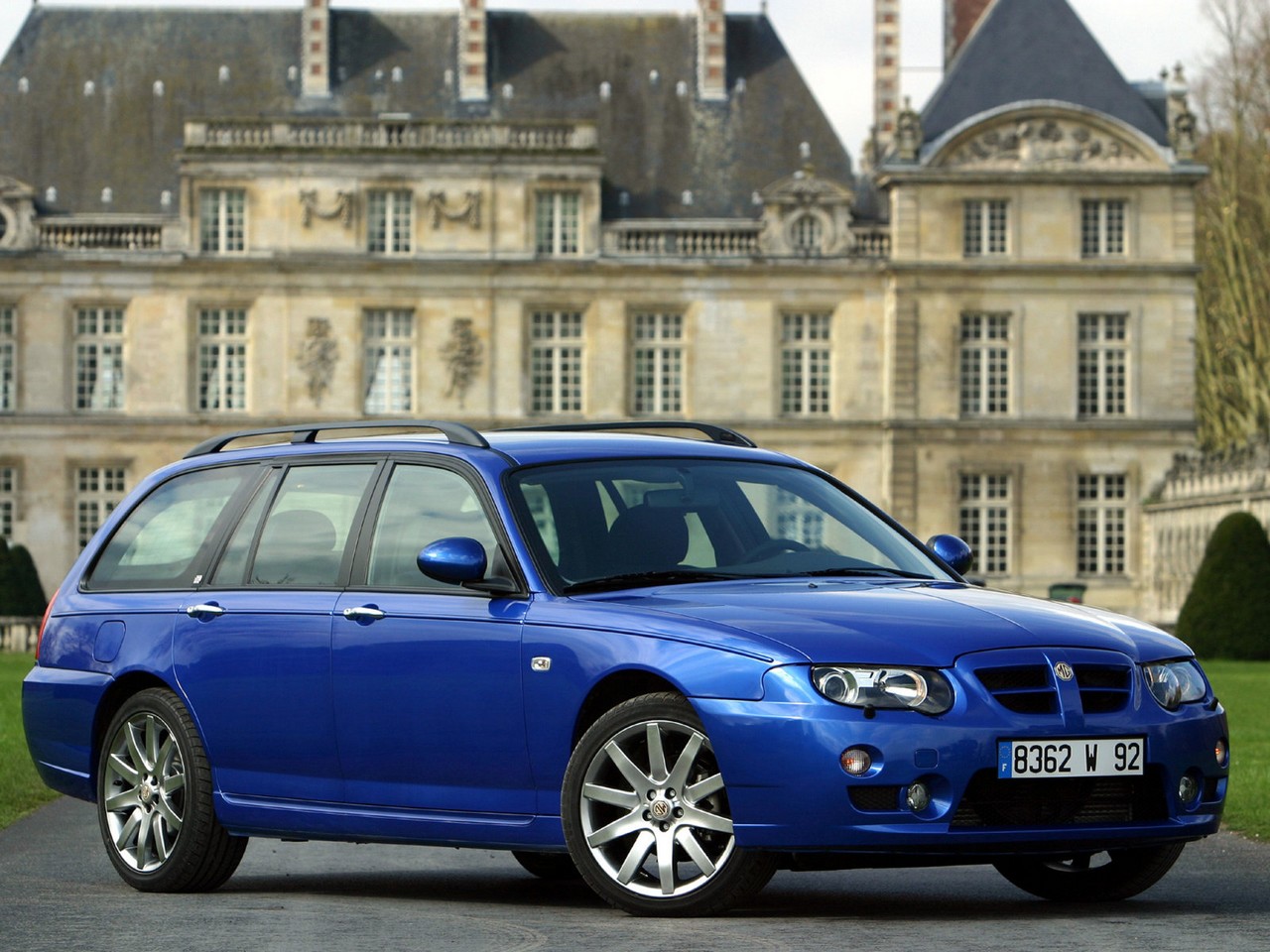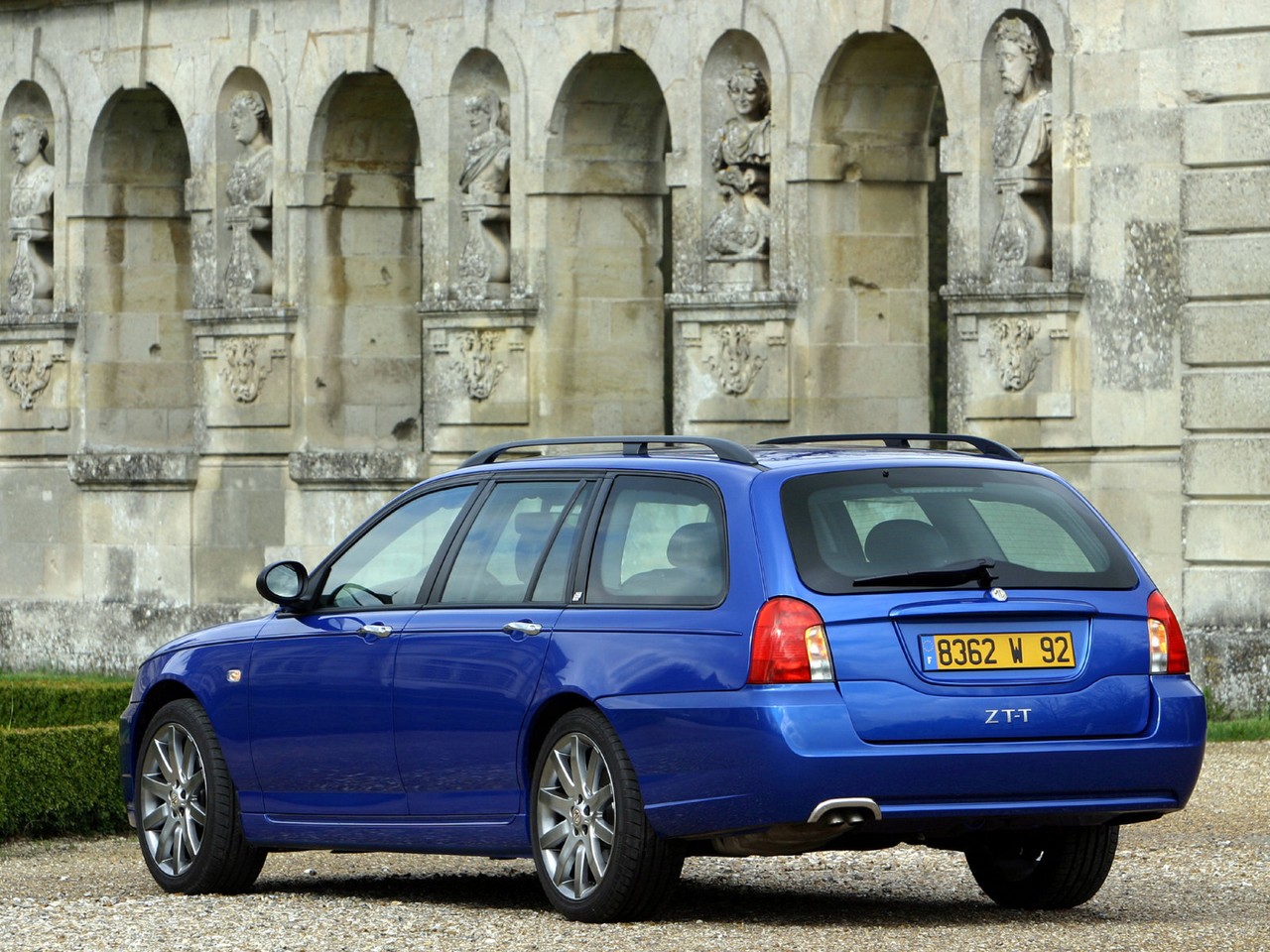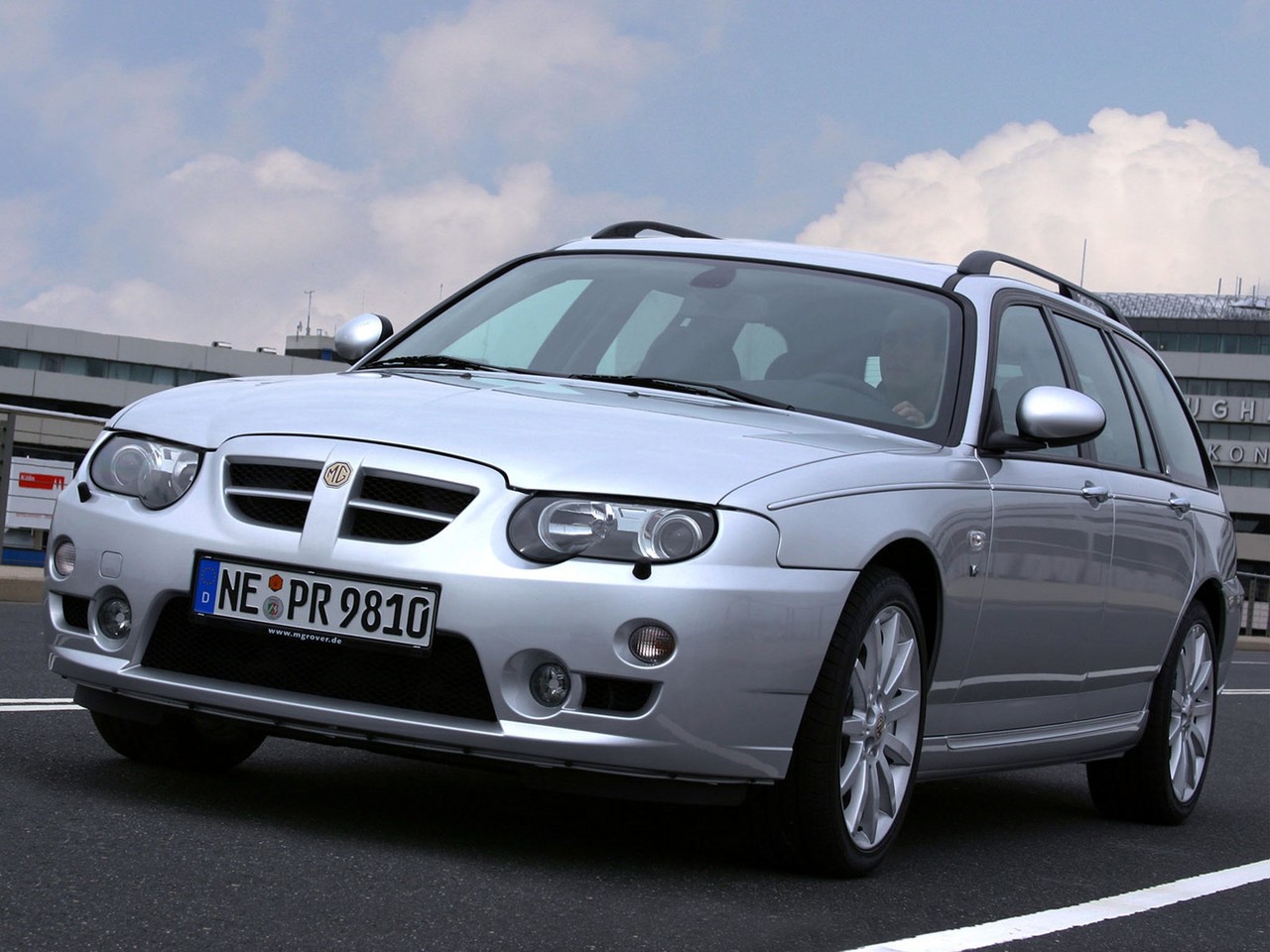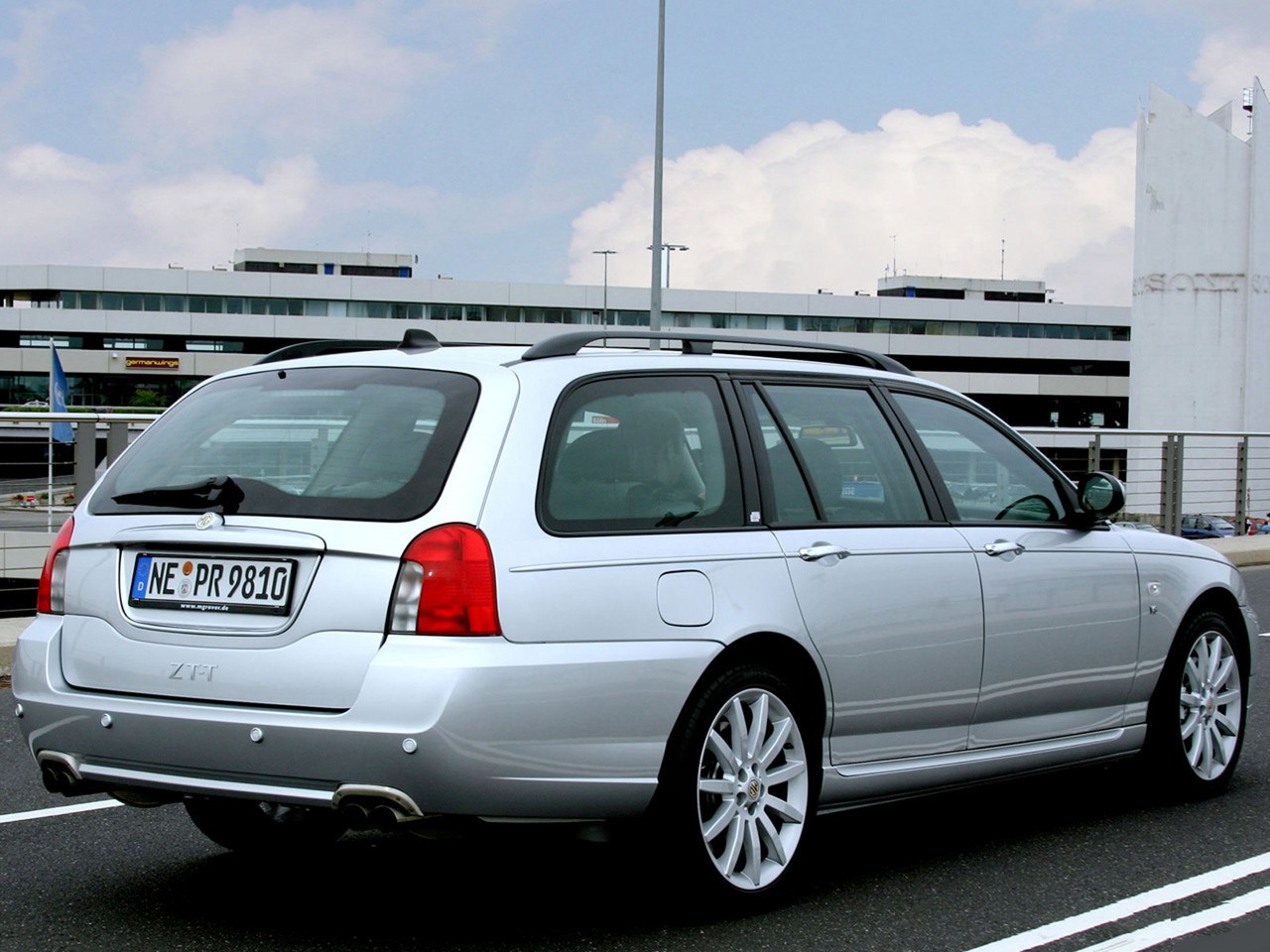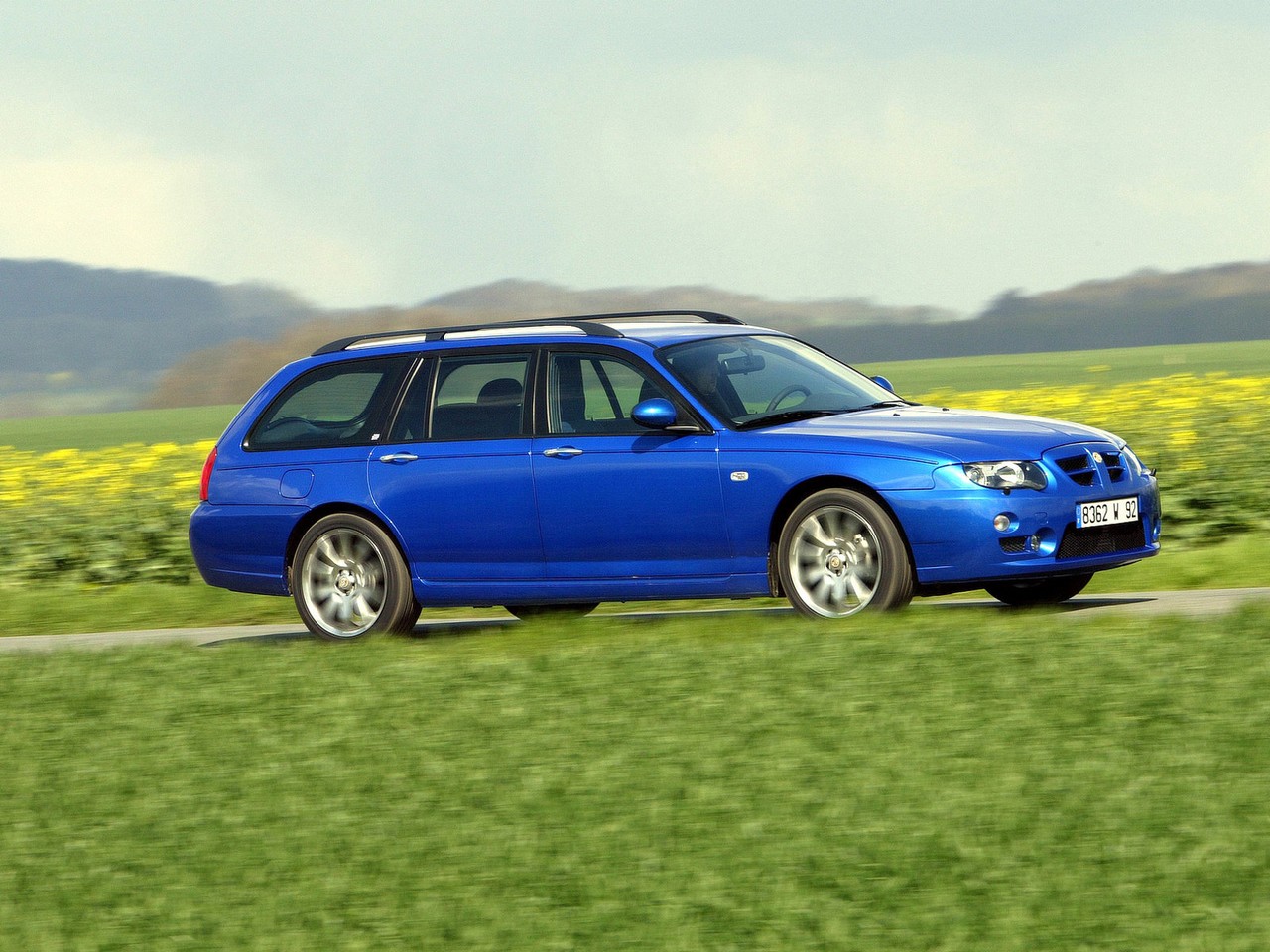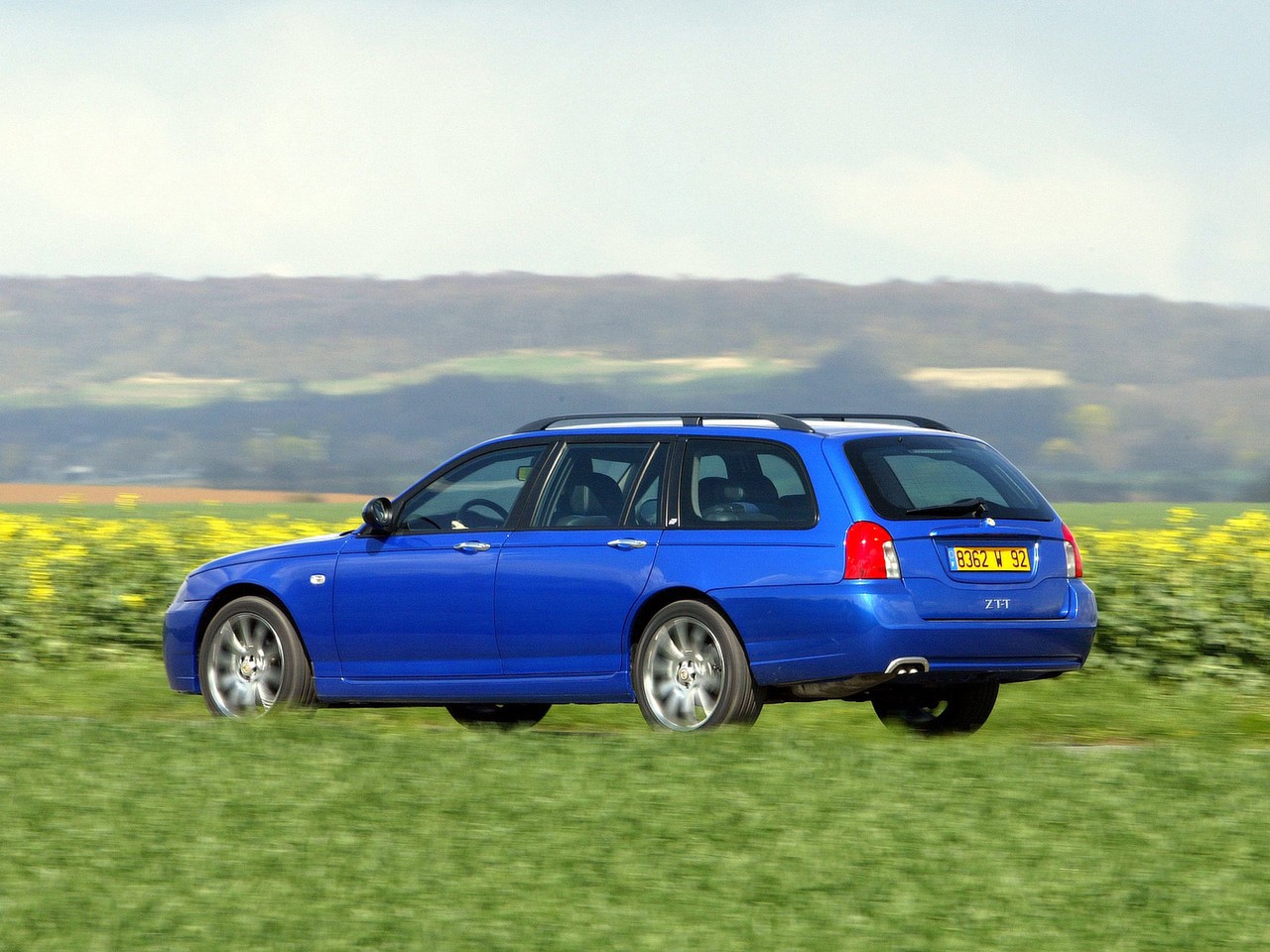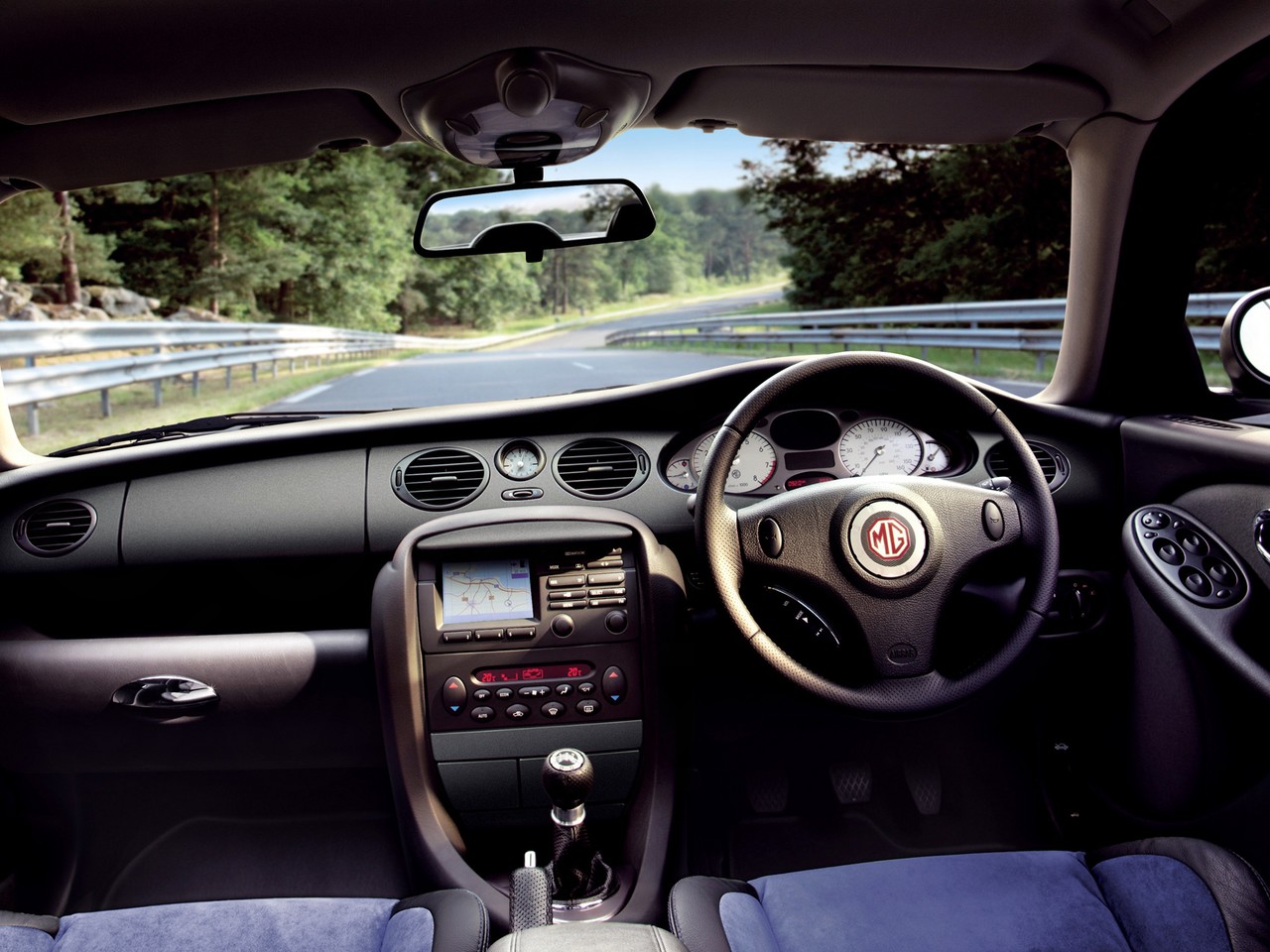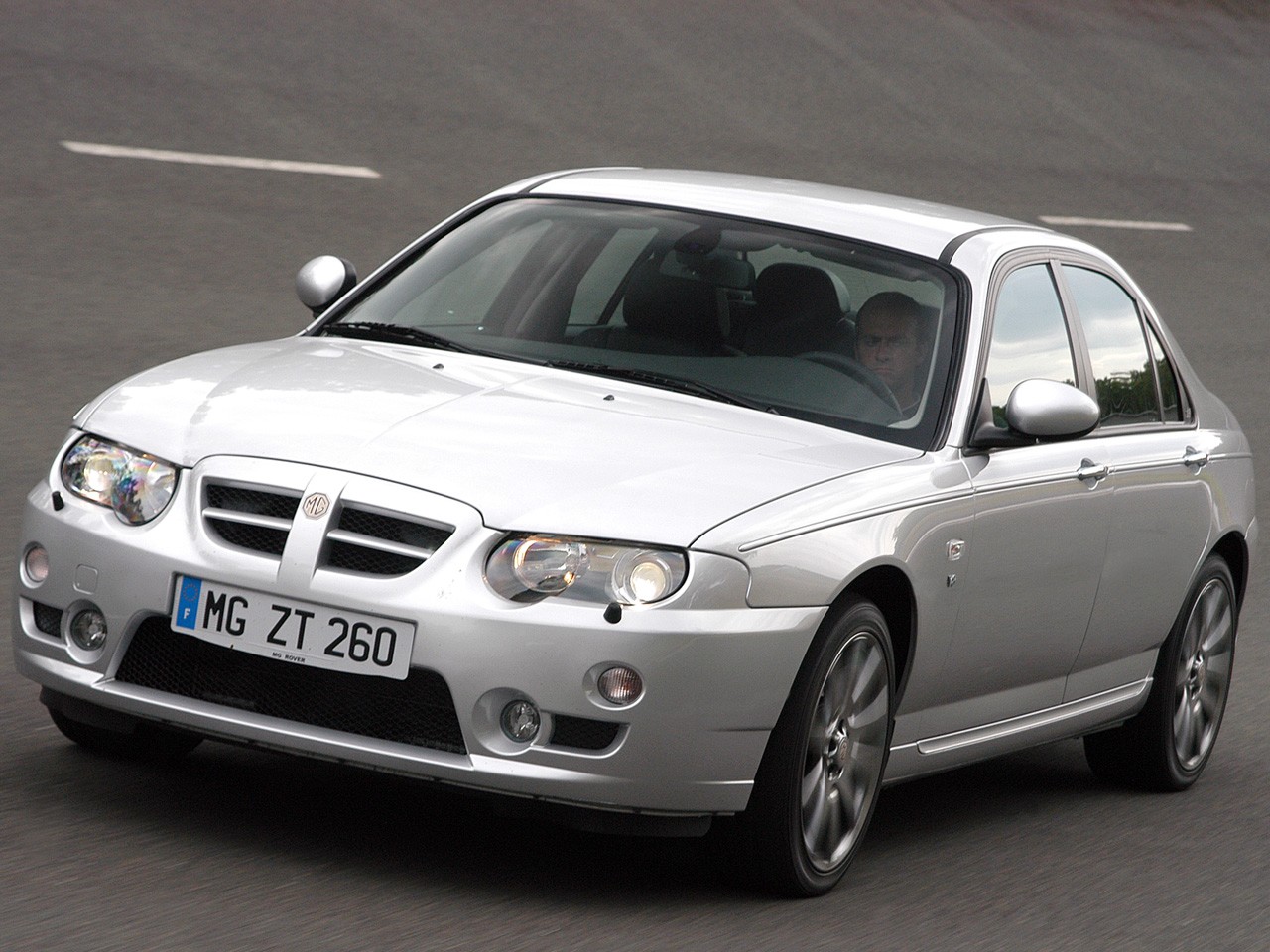
- Willing 2.5-litre engine
- Accurate, well-weighted steering
- Effective brakes
- Generally impressive ride/handling balance…
- … but suspension lacks low-speed compliance
- 2.5-litre V6 engine lacks low-rev torque
- 4.6-litre V8 engine lacks top-end performance
- Cramped interior, particularly the rear
- For 2.5-litre engine, variable inlet system susceptible to failure
Review: MG Mk.I ZT and ZT-T (2002-04)
Overview
Released in May 2002, the MG Mk.I ZT and ZT-T were mid-size sedans and wagons, respectively. Manufactured in England, the front-wheel drive ZT range initially consisted of 180 and 190 variants – the numbers referring to the brake horsepower of the engines – which were powered by 2.5-litre V6 petrol engines that were mated to three-mode, five-speed automatic transmissions or five-speed Getrag manual transmissions.
KV6 engine: ZT 180 and ZT 190
The MG ZT was powered by Rover’s 2.5-litre KV6 engine which had a 90-degree ‘V’ angle, an aluminium alloy block with 80.0 mm bores and an 82.8 mm stroke for a capacity of 2497 cc, cast iron cylinder liners, an aluminium alloy cylinder head, double overhead camshafts (per cylinder bank), a pressurising variable intake system (VIS), four valves per cylinder actuated by hydraulic tappets, multi-point fuel injection and a compression ratio of 10.5:1. The firing order for the KV6 engine was 1-6-5-4-3-2.
Compared to the Rover 75 , changes for the MG ZT engine included an enhanced cooling system with a 20 per cent larger intake area, a higher-flow radiator and top hose configurations, and a plate-type oil/water oil cooler (replacing the oil/air heat exchanger). Other changes for the ZT included unique MG throttle camshafts and ECU tuning for greater throttle response and a reduction of the standard throttle on/off damping.
Differences for the MG ZT 190 engine relative to the ZT 180 included:
- A different inlet camshaft profile which advanced inlet valve opening;
- An 80 mm diameter intake duct for the air cleaner (compared to 70 mm for the ZT 180);
- A new intake diffuser which reduced pressure losses and provided a more sporting induction sound;
- Low-restriction metal-based starter and main catalytic converters; and,
- A 60 mm diameter exhaust pipe (compared to 57 mm for the ZT 180) and modified silencer with larger-bore internal pipes, twin straight tail pipes and a mechanical valve which responded to exhaust pressure at around 4500 rpm to bypass the internal baffles.
Dimensions and suspension
Although developed when MG Rover was owned by BMW, the Rover 75 – on which the ZT was based – was developed independently and therefore not related to any BMW vehicles. Compared to the Rover 75, the MG ZT was 10 mm shorter (at 4740 mm) and 17 mm lower (1410 mm), though width (1780 mm) and wheelbase length (2750 mm) were unchanged; compared to its sedan counterpart, the MG ZT-T was 52 mm longer (at 4792 mm).
The MG ZT had MacPherson strut front suspension (anchored by lower alloy L-arms) and a ‘Z’ rear axle.
| Model | Body | Engine | Variant | Trans. | Peak power | Peak torque |
|---|---|---|---|---|---|---|
| ZT | Sedan | 2.5-litre petrol V6 | 180 | 5sp auto | 133 kW at 6500 rpm | 240 Nm at 4000 rpm |
| 190 | 5sp man. | 140 kW at 6500 rpm | 245 Nm at 4000 rpm | |||
| ZT-T | Wagon | 2.5-litre petrol V6 | 180 | 5sp auto | 133 kW at 6500 rpm | 240 Nm at 4000 rpm |
| 190 | 5sp man. | 140 kW at 6500 rpm | 245 Nm at 4000 rpm |
Safety equipment
Standard safety equipment included dual front airbags, front side airbags, full-length curtain airbags, ABS, electronic brake force distribution, front and rear seatbelts with pretensioners and front seatbelt load limiters.
Euro NCAP crash testing
In Euro NCAP crash testing , a 2001 Rover 75 with a 1.8-litre petrol engine – and without curtain airbags – received a four star adult occupant protection rating with a score of 29.78. The driver experienced high chest forces in the frontal offset impact test, though maximum points were achieved in the side impact test. On a vehicle fitted with curtain airbags, the Rover 75 passed the pole test; if two points had been added for this test, the Rover 75 would have scored 31.78 points, close to the 32.50 points required for a five star adult occupant protection rating.
Features: MG ZT and ZT-T
Standard features for the MG ZT and ZT-T included 18-inch alloy wheels with 325 mm front brake discs, a six speaker sound system with CD player, air conditioning, cruise control, contoured sports seats with leather bolsters, xenon headlights, front and rear fog lights, a folding rear seat, leather-wrapped steering wheel with audio controls, a leather-wrapped gearshift and handbrake, remote central locking, power windows and heated mirrors, a tilt and reach adjustable steering wheel, height adjustable driver’s seat, an alarm and immobiliser.
The ZT-T was also equipped with a 60/40 split and folding rear seat, separately opening rear tailgate window and underfloor storage compartment.
The ZT and ZT-T were also available in ‘+’ editions; these models were equipped with sports seats with Alcantara centres and leather bolsters, a power glass sunroof with internal shade, rear parking sensors, auto-dimming rear view mirror and trip computer. Climate control air conditioning was available as an option.
Review: MG Mk.II ZT (2004-05)
Overview
Released in August 2004, the Mk.II ZT introduced an expanded range, additional features, updated styling and revised suspension (with longer travel dampers). The ZT-T wagon was discontinued, but the Mk.II ZT range was expanded with the introduction of the 220S – equipped with a low-boost, twin-screw supercharger developed and fitted by Sprintex – and the 260. The ZT 260 was powered by a Ford-sourced 4.6-litre V8 engine and, unique amongst the ZT range, was rear-wheel drive.
Visually, the Mk.II ZT could be identified by its dual headlights with halogen projector units, restyled and more prominent grille, revised lower lip rear spoiler and new alloy wheel designs. Inside, there was a revised dashboard, new console finish, re-shaped front seat bolsters, re-profiled seat cushions and squabs for improved leg room and new instruments with improved backlighting.
| Engine | Variant | Trans. | Peak power | Peak torque |
|---|---|---|---|---|
| 2.5-litre petrol V6 | 180 | 5sp auto | 133 kW at 6500 rpm | 240 Nm at 4000 rpm |
| 190 | 5sp man. | 140 kW at 6500 rpm | 245 Nm at 4000 rpm | |
| 2.5-litre s/charged petrol V6 | 220S | 5sp auto, 5sp man. |
165 kW at 6400 rpm | 288 Nm at 4100 rpm |
| 4.6-litre petrol V8 | 260 | 5sp man. | 191 kW at 5000 rpm | 410 Nm at 4000 rpm |
Features
As part of the Mk.II update, the ‘+’ editions were discontinued, but standard features were extended to include a six-disc CD stacker with MP3-compatibility, dual zone climate control air conditioning, leather seats, power adjustable front seats, trip computer and remote control boot opening.
MG ZT 260
Compared to the other variants, the ZT 260 was fitted with AP brakes (325 mm front ventilated discs with sliding-pin calipers and 332 mm rear ventilated discs with opposed-piston calipers), Eibach linear rate springs, Bilstein monotube struts, a five-speed Tremec manual transmission, Dana ‘Hydratrak’ limited slip differential and switchable traction control.
January 2005: MG ZT update
In January 2005, standard features were improved to coincide with tariff reductions; the V6 models gained a power sunroof, while the ZT 260 was also fitted with satellite navigation.
Related links
